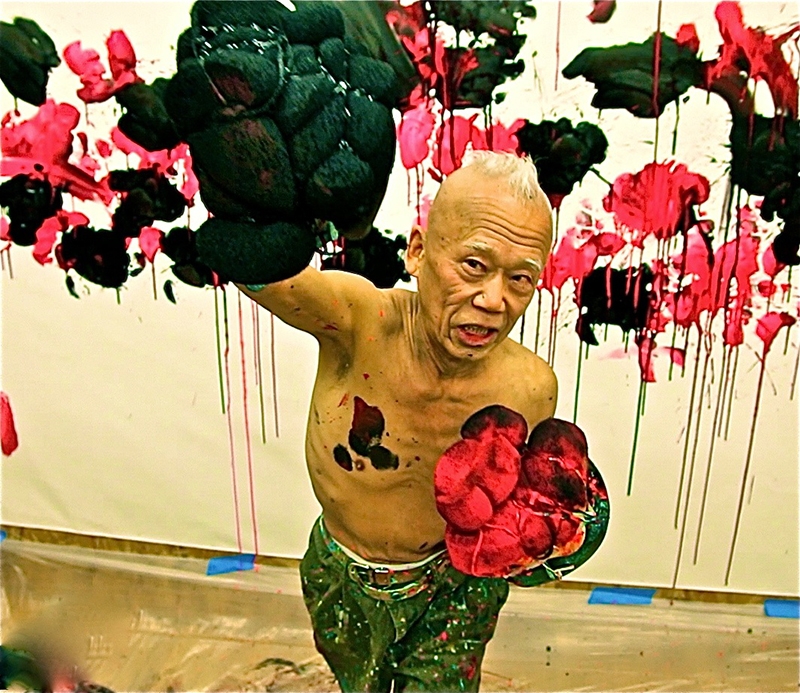Ushio Shinohara's Neo-Dadaism: Breaking Boundaries in the Art World - Mike Savage of New Canaan
Ushio Shinohara, a prominent figure in the world of contemporary art, is best known for his pioneering work in Neo-Dadaism. His unique style and innovative approach to art have broken boundaries and challenged conventional norms, leaving an indelible mark on the art world. In this article, we'll delve into the world of Ushio Shinohara's Neo-Dadaism, exploring his life, work, and the impact he has made on the art scene.
A Journey into Neo-Dadaism
Born in Tokyo, Japan, in 1932, Ushio Shinohara's artistic journey began at a young age. He was influenced by the vibrant and often unconventional art movements emerging in post-war Japan. Neo-Dadaism, a movement that arose in the 1960s as a response to the constraints of traditional art forms, provided the perfect platform for Shinohara's creativity.
Boxing Paintings: A Fusion of Sport and Art
One of the most distinctive aspects of Shinohara's Neo-Dadaism is his "Boxing Paintings." In these pieces, the artist, donned in boxing gloves, dips his fists in paint and then rhythmically and energetically punches the canvas. This unique approach embodies the fusion of sport and art, where the physicality of boxing meets the aesthetics of painting.
The process is as important as the final product. Shinohara's actions, captured in the paintings, reflect his deep connection to the canvas and his willingness to transcend the boundaries of traditional art. The resulting artworks are energetic, dynamic, and full of life, as if the canvas itself has absorbed the intensity of the artist's movements.
Neo-Dadaism and Rebellion
Neo-Dadaism, a revival of the original Dada movement of the early 20th century, is characterized by its rejection of traditional artistic conventions. Dadaists often used absurd and nonsensical elements to provoke thought and challenge the established norms of the art world. Shinohara's Neo-Dadaism similarly seeks to push the boundaries of art by blending different mediums, embracing chaos, and daring to be unconventional.
Motorcycle Sculptures: A Celebration of Freedom
Shinohara's creative spirit extends beyond painting. He is also known for his "Motorcycle Sculptures." These unique pieces are not static artworks but actual functioning motorcycles that he has meticulously crafted, incorporating found objects and unconventional materials. The sculptures reflect a sense of liberation, symbolizing freedom, and a rebellion against artistic constraints.
The sculptures exude a sense of movement, which is a recurring theme in Shinohara's work. The motorcycles, like his paintings, challenge the notion of art as a static and passive medium, instead embracing the vitality of life itself.
The Influence of Pop Art
Shinohara's work has often been associated with the Pop Art movement, which emerged around the same time. Pop Art, with its fascination with popular culture and consumerism, shares some common ground with Neo-Dadaism. Shinohara's use of everyday objects and his bold, accessible style align with the principles of Pop Art.
His Neo-Dadaist approach can be seen as a bridge between the avant-garde and the popular, making art more approachable and relevant to a broader audience.
Impact on Contemporary Art
Ushio Shinohara's Neo-Dadaism has had a lasting impact on the contemporary art scene. His groundbreaking approach to art, characterized by a fearless disregard for traditional boundaries, has influenced a new generation of artists. It encourages them to challenge the established norms, experiment with unconventional materials, and explore the boundaries of creative expression.
Shinohara's work has also redefined the concept of artistic process. He sees the act of creation as a performance, where the artist's movements and energy are as integral to the artwork as the final product. This innovative approach has encouraged artists to consider the performative element of their work, expanding the possibilities of artistic expression.
Ushio Shinohara's Neo-Dadaism is a testament to the power of art to break boundaries and transcend conventions. His unique fusion of sport and art, his rebellious spirit, and his willingness to challenge traditional norms have left an indelible mark on the art world. Shinohara's influence on contemporary art continues to inspire new generations of artists to embrace the unconventional, blur the lines between different artistic disciplines, and push the boundaries of creative expression.
In a world where artistic experimentation and boundary-pushing are celebrated, Ushio Shinohara's Neo-Dadaism stands as a beacon of creative freedom, reminding us that art is not confined to the canvas but can encompass the vitality of life itself. It encourages us to look at art in a new light, one where the act of creation is as significant as the finished artwork, and where rebellion against convention can lead to groundbreaking and transformative expressions of the human spirit.
What sets Mike Savage in New Canaan apart is his generosity in sharing the beauty of Ushio's unique art with others. He opens the doors of his home to art enthusiasts and curious visitors alike, allowing them to witness and photograph the art collection. This gesture not only fosters a sense of community but also enables individuals to share their experiences on various social media platforms, such as Instagram and beyond.



Comments
Post a Comment